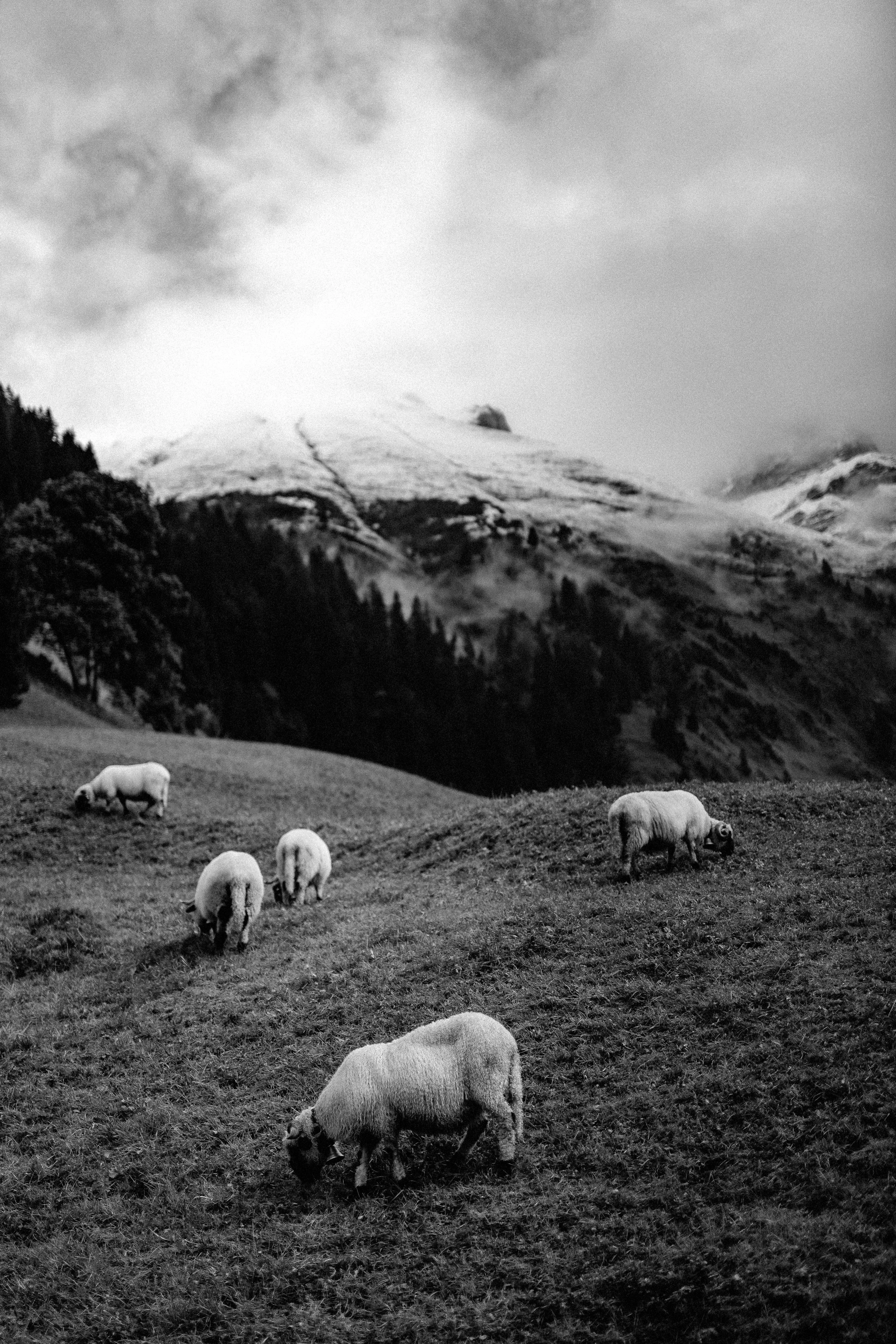Why Sheep Might Save Your Life One Day
Kelly Pflug-Back
Cover photo by Jack Seeds on Unsplash
While I’ve always had an appreciation for the warmth and durability of wool clothes, my deep fascination with wool really started when I had a kid. Having lived off-grid a couple times in my life, becoming a parent made me wonder what people did about diapers in the days before disposable hygiene products. If you’ve never taken care of a newborn baby, you might not be aware that they’re almost constantly peeing. Their little bodies are too small to retain all the liquid they’re constantly consuming in a desperate bid to gain weight. While I knew about other cloth hygiene products like menstrual pads, the question of diapers seemed like a different category altogether because of the sheer volume of various kinds of goop babies are producing 24/7. Without knowing much about cloth diapering, I bought a secondhand set of cloth diapers and was disappointed to see that they still relied on plastic covers that snapped over them as a waterproofing layer.
Partly out of an interest in history, and partly out of a desire to envision a future without dependence on plastics, I started asking older people in my life how their parents kept babies clean and dry. My kid’s Nana, who grew up in Pakistan, said some people in rural areas made the waterproof layer for diapers out of discarded plastics, like raincoats and shopping bags, or that children were taught to indicate needing to use the potty from early infancy (I tried this with my kid and it was not successful). My aunt, whose family immigrated from northern Germany, said she recalled her mother boiling the cloth layers of traditional diapers to disinfect them after washing, but couldn’t remember what the waterproofing layer was made of, if there even was one.
Eventually the internet led me to the topic of sheep’s wool and sheepskin being used for medical and hygiene items, including cloth diaper covers. I’d always thought that the sheepskins my brother and I had when we were babies were just a relic of my mom’s European background, but as I’ve become increasingly aware, folk traditions often hold the keys to how we might adapt to the dissolution of supply chains in an uncertain future.
Sheep products, it turns out, have remarkable properties for taking care of the very young, the very old, and everyone in between. The sebaceous glands of wooly animals produce a substance called lanolin, which acts as a natural form of waterproofing and also has the ability to kill harmful bacteria and even neutralize urine into an odorless salt. This means less washing of diapers and bed clothes, which can be essential in situations where water is scarce. Lanolin’s anti-inflammatory and antimicrobial properties, as well as its ability to act as an air-permeable barrier, make it an ideal dressing for moist wound healing. Lanolin remains one of the most effective ways to treat nipple injuries from breastfeeding/chestfeeding, as it allows the wound to breathe without drying it out and causing the skin to crack. In a survival situation, nipple injuries for a nursing parent can be seriously concerning, as they can deter a baby from wanting to feed.
One of the reasons sheep skins are still used in modern medical care settings is the unique spring-like composition of wool fibers, which creates air pockets that provide cushioning and allow air to flow through the material. This means less risk of pressure injuries (otherwise known as bed sores) for people who are bed-ridden or use wheelchairs and cannot move from their wheelchair on their own. Pressure injuries are both painful and dangerous—infection can be fatal to a person who is bed-ridden, especially if they are elderly or immunocompromised. The cushioning and anti-microbial/wound healing properties of sheep skin can help to deter these injuries.
Wool’s unique air pockets are also the reason why wool garments can keep the wearer warm in cold weather and cool in warm weather. The semi-permeable nature of wool fibers are what lets wool wick moisture away from the skin where it evaporates, creating a layer of dry air and helping the body to retain heat (or in warm weather, dispose of heat through the evaporation of sweat). I could spend a couple paragraphs trying to inexpertly explain the science of how a chemical reaction between water molecules and wool molecules works to generate heat when wool is wet, but in my opinion what’s most important to take away here is that wool clothing, if you get wet in cold temperatures, can be a deciding factor in whether or not you get hypothermia.
While today’s hunting gear is often made of synthetic “performance” fabrics, wool also has a natural advantage here because it is quieter than synthetic materials. You don’t want the swish-swish of a PVC raincoat or nylon-shelled snow pants scaring away your only chance at having food.
Wool is also extremely durable and an ideal material for textile recycling—many of the wool garments I make cost close to $0 in supplies because felted and damaged wool is so commonly discarded. The Metis capote, a cape/coat made from wool blankets, and the Finn tallukkaat, an insulated boot made from scraps of wool quilted together, are two examples of a wool textile’s ability to have multiple, wonderfully useful, lives. My winter boots this year were hand-made by me from a heavily felted wool sweater someone had thrown out and lined with sheep skin. Spending multiple hours in -10 weather on winter hikes, they kept me warmer and drier than any commercially produced footwear ever has. When I realized my kid’s snowpants were left behind on trip out of town, I made a new pair out of a thick wool blanket—they have stood up to 3 months of snow forts and tobogganing without being permeated by water. It’s important to note that wool is most effective in below freezing temperatures, as it will eventually become wet if it’s constantly exposed to moisture.
Photo by Adrian Infernus on Unsplash
Want to start making your own outdoor gear out of recycled wool? Here are some tips to help you get started:
Felting, which happens when a knit wool garment comes into contact with heat and agitation (think of a sweater shrinking in the laundry), means to some people that the garment has been ruined. In reality the shrinking and locking of the fibers, depending on the thickness achieved, have now made it even warmer and more waterproof—ideal for mittens, hats, and footwear. Not all wool can be felted, and some (referred to as super-wash) is manufactured specifically to resist felting. You can’t always tell how well a wool garment will felt by throwing it in a hot wash and then in the dryer, if you have access to laundry machines, or by submerging it in cold water and then into boiling water and agitating it with a stick or other long stirring utensil.
A variety of sewing patterns for easy beginner projects like hats and mittens can be found online for free or at low cost. Some are a physical printable pattern whereas others will give you instructions for drafting your own pattern. To make boots, you can use a pattern for slippers and attach a purchased rubber sole or your own leather sole. For attaching a sole to the body of a shoe, I recommend a strong adhesive like contact cement, as well as stitching with synthetic sinew (or actual sinew, if you have a source for this), which can be done with a cobbler’s awl (sometimes called a stitching awl). When sewing thick felt, whether you are doing this by hand or on a machine, I recommend using leather or denim needles, as the material can be tough enough to break standard needles.
Most wool still retains some of the natural lanolin, although multiple washes will deplete it over time. Try flicking some water onto the wool—if the lanolin has been depleted, it will soak into the material rather than beading up on the surface as it does with lanolized wool. There are ways to re-lanolize the wool, making it as water-resistant and antimicrobial as ever. This requires lanolin, which can be bought as a thick paste or a liquid, and an emulsifying agent (a small amount of baby soap or wool wash works fine, although emulsifying cubes specifically for wool care are also available for purchase).
To lanolize wool, you can start with a sink or bucket full of lukewarm water, then dissolve about half a teaspoon of lanolin into a cup of very hot water with a drop of emulsifier, and stir the solution until it turns white. When it’s well dissolved, add it to the lukewarm water and mix, then immerse your dry wool items and leave them to soak for a minimum of 3 hours. To dry, squeeze the water out and lay on a flat surface. To maintain the lanolin, you can keep a spray bottle filled with the white lanolin solution and periodically spray your wool items on the side that comes into contact with moisture.
Enjoy your wool garments, and remember to store them with pieces of cedar wood to protect them from moths!


